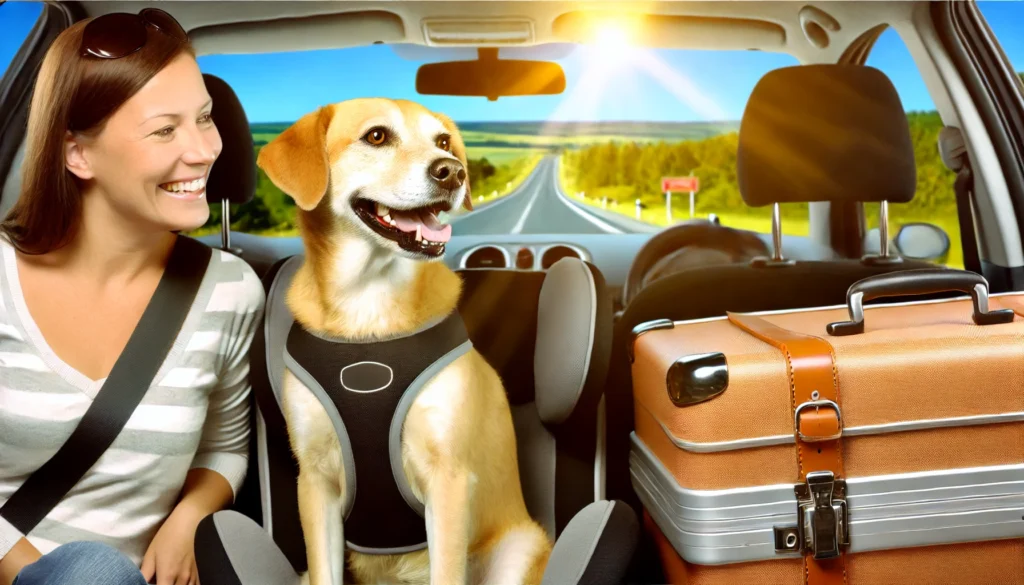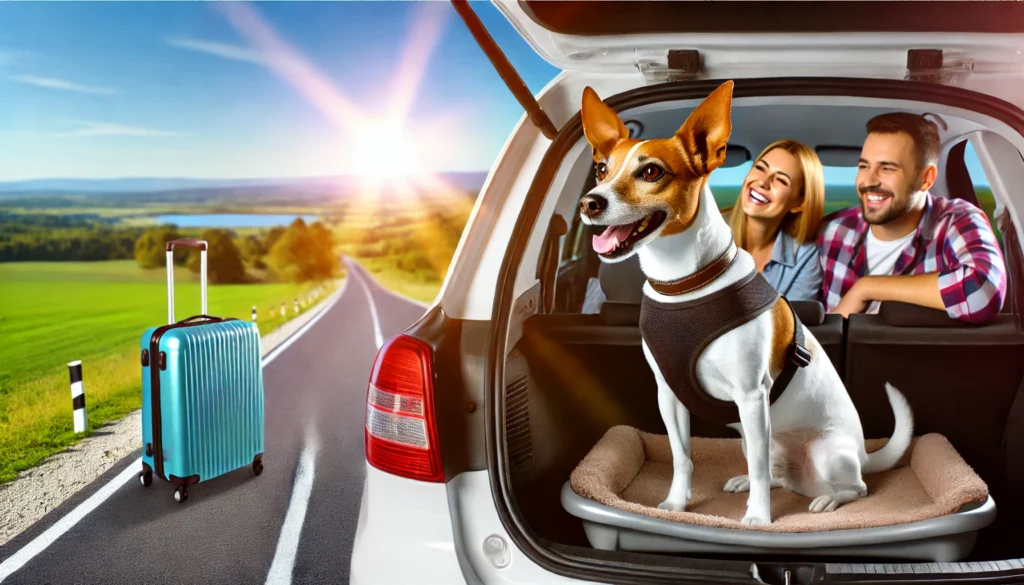Traveling with your dog can be a rewarding and memorable experience. However, it requires careful planning and preparation to ensure your pet's safety and well-being. As a veterinarian specializing in dog care, I will share valuable tips to help you plan a peaceful and enjoyable trip with your four-legged friend.
Preparation Before Travel
Before embarking on an adventure with your dog, there are several preparatory steps you should consider. First, make sure your dog is in good health. Schedule a visit to the vet for a complete check-up and ensure all vaccinations are up to date. Also, make sure your dog has an up-to-date microchip and wear a collar with an ID tag containing your name and phone number.
Another important tip is to get your dog used to transportation. If you plan to travel by car, start with short trips so he becomes familiar with his surroundings and feels more comfortable. For air travel, choose an airline-approved carrier and train your dog to remain inside it calmly and safely.
Itinerary Planning
Itinerary planning should take your dog's needs into account. Choose pet-friendly destinations that offer dog-friendly accommodations and activities. Pet-friendly hotels, dog-friendly parks and beaches are excellent options. Additionally, plan regular stops during your trip so your dog can stretch his legs, eliminate, and hydrate.
Another crucial aspect is nutrition. Take enough food that your dog is used to eating to avoid digestive problems. Additionally, carry a bottle of water and a portable food bowl to keep your dog hydrated throughout the trip.
During the Car Trip
Traveling by car with your dog can be quite enjoyable, as long as some safety measures are followed. Use a dog seat belt or a well-ventilated carrier to prevent your dog from moving freely around the vehicle, which can be dangerous in the event of sudden braking.
Keep the car well ventilated, but avoid leaving your dog with its head out the window, as this can cause eye and ear damage. Make stops every two hours so your dog can do his business and get some exercise. Never leave your dog alone in the car, especially on hot days, as the temperature can rise quickly and cause heatstroke.

Traveling by Plane with your Dog
Traveling by plane with your dog requires even more planning. Make sure you know the airline's rules about transporting animals. Some companies allow small dogs to travel in the cabin with their owners, while others require that the animals be transported in the cargo hold.
Before the flight, provide your dog with a light meal and allow him to get plenty of exercise so he is tired and more likely to rest during the trip. Place an absorbent mat and familiar toys in the carrier to help your dog feel more comfortable.
Accommodation in Pet-Friendly Destinations
Choosing the right accommodation is essential to guarantee a pleasant stay with your dog. Look for pet-friendly hotels and see if they offer dog-specific amenities, such as walking areas and pet care services. When you arrive, allow your dog to explore the environment to make him feel more comfortable.
Nutrition and Hydration Care
Keeping your dog well fed and hydrated is crucial while traveling. Take your dog's usual food to avoid dietary changes that could cause intestinal discomfort. Always have fresh, clean water on hand and offer it regularly to prevent dehydration.
Activities and Entertainment for your Dog
Plan activities that will keep your dog engaged and happy during your trip. Walks in parks, visits to dog-friendly beaches and even hotel play sessions are great ways to ensure your dog has as much fun as you do. Remember to bring your dog's favorite toys to help him feel more at home in new environments.
Safety and Wellbeing Care
Your dog's safety should always be a priority. Keep a quality collar and leash and use a harness if necessary for greater control. Make sure your dog is always under supervision, especially in busy or unfamiliar areas.
Travel Healthcare
Bring a copy of your dog's medical history, including his vaccination record. This can be useful if you need to visit a veterinarian while traveling. Additionally, prepare a dog first aid kit, containing basic items like bandages, disinfectants, and prescription medications.
Adaptation to the New Environment
Once you arrive at your destination, give your dog time to adapt to the new environment. Let him explore the area and familiarize himself with the new smells and sounds. This helps reduce stress and anxiety, ensuring a smoother experience for both of you.

Importance of Routine
Even when traveling, try to keep your dog's routine as normal as possible. Feeding him at the same times and ensuring he has similar rest periods to what he is used to can make a big difference to your pet's well-being.
Socializing in New Places
Take advantage of the trip to socialize your dog in different environments. Meetings with other dogs and interactions with new people can be enriching, as long as they are done in a safe and supervised way. This helps your dog become more adaptable and sociable.
Climate Care
Pay attention to the climate of your destination. In hot places, avoid walks during peak heat hours and constantly provide shade and fresh water. In cold weather, make sure your dog is adequately protected from the cold with appropriate clothing if necessary.
Local Legislation
Check local legislation regarding the presence of dogs in public spaces. Some cities have specific rules about the use of leashes, areas allowed for dogs, and hygiene regulations. Complying with these rules is important to avoid fines and ensure harmonious coexistence with local residents.
Return home
After a successful trip, the return home should be smooth. Give your dog time to readapt to the familiar environment and observe his behavior for any signs of stress or discomfort. Schedule a vet appointment for a post-travel check-up to ensure your dog is in perfect health.
Additional Tips for Car Travel
When planning longer car trips, consider using seat protectors to keep dirt and hair out of the vehicle. Another tip is to keep a bag with essential items, such as bags for collecting feces, towels, toys and medicines. This facilitates quick access during stops.
Additional Tips for Airplane Travel
For air travel, find out about documentation and vaccination requirements in advance. Some countries require specific certificates or quarantine for the entry of animals. Being prepared avoids inconvenience and guarantees a smoother trip.
Useful Apps for Travelers with Pets
There are several apps that can make traveling with your dog easier. Map apps that indicate pet-friendly locations, such as parks and restaurants, and animal health apps that provide information about local veterinarians are examples of useful tools to ensure a safe and enjoyable trip.
Conclusion
Traveling with your dog can be an enriching and fun experience, as long as you are well prepared and attentive to his needs. By following these tips, you can ensure your trip is safe and enjoyable for both of you. With proper planning, attention to detail, and a little patience, you and your dog can enjoy unforgettable adventures together.
